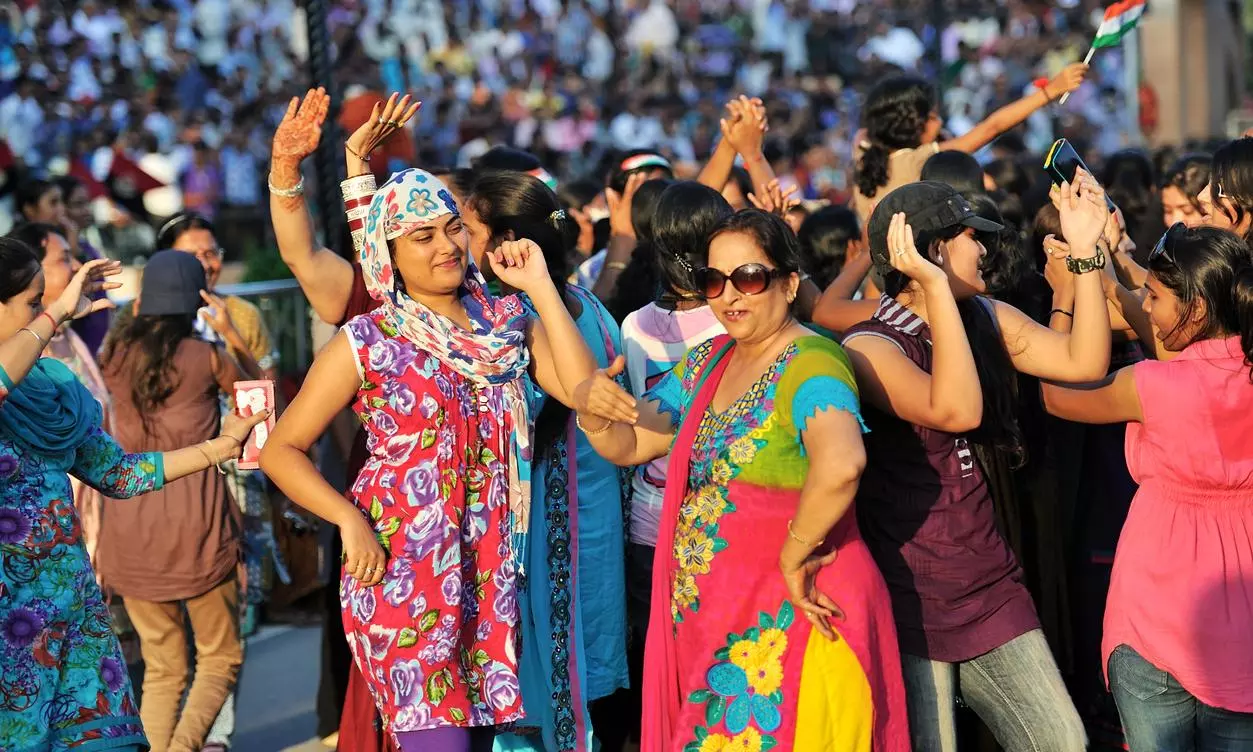
- Home
- India
- World
- Premium
- THE FEDERAL SPECIAL
- Analysis
- States
- Perspective
- Videos
- Sports
- Education
- Entertainment
- Elections
- Features
- Health
- Business
- Series
- In memoriam: Sheikh Mujibur Rahman
- Bishnoi's Men
- NEET TANGLE
- Economy Series
- Earth Day
- Kashmir’s Frozen Turbulence
- India@75
- The legend of Ramjanmabhoomi
- Liberalisation@30
- How to tame a dragon
- Celebrating biodiversity
- Farm Matters
- 50 days of solitude
- Bringing Migrants Home
- Budget 2020
- Jharkhand Votes
- The Federal Investigates
- The Federal Impact
- Vanishing Sand
- Gandhi @ 150
- Andhra Today
- Field report
- Operation Gulmarg
- Pandemic @1 Mn in India
- The Federal Year-End
- The Zero Year
- Science
- Brand studio
- Newsletter
- Elections 2024
- Events
- Home
- IndiaIndia
- World
- Analysis
- StatesStates
- PerspectivePerspective
- VideosVideos
- Sports
- Education
- Entertainment
- ElectionsElections
- Features
- Health
- BusinessBusiness
- Premium
- Loading...
Premium - Events

To suggest rural-urban consumption gap has narrowed is to expect grown-ups to believe in fairytales, but state-wise numbers shed light on development models
The 2022-23 survey data on the monthly per capita consumption expenditure (MPCE) for India’s diverse population brings seeming cheer.
The picture it reveals is of declining poverty, a narrowing rural-urban divide, and a reduction in the share of food in the expenditure basket for both rural and urban areas.
The share of food in the rural consumption basket has come down from 59 per cent in 1999-2000 and 53 per cent in 2011-12 to 46 per cent in 2022-23. The decline in urban areas has been sharper: from 48 per cent in 1999-2000 and 43 per cent in 2011-12 to 36 per cent in 2022-23.
Trends in consumption basket
The reduction in the share of food in the consumption basket would allow the weightage for food in the construction of the consumer price index to be reduced. Since sudden spurts in the prices of onions, tomatoes, potatoes and other vegetables push up the food part of the price index, reducing the weightage for food would reduce overall inflation. This could help statisticians improve the inflation-adjusted growth rate of the economy.
The greater diversification of the consumption basket is good news for all non-food producers, including service providers. One service that has visibly grown in urban areas in the recent past is that of the stand-up comedian, to attend whose shows people pay good money. The clever wringing of MPCE data to bring out cheerful tidings has much grist to offer the comedian’s mill.
Missing consumption data
To begin with, let us understand that the results of these consumption surveys have to be seasoned with iodised salt before consumption.
If you multiply the per capita monthly consumption expenditure by 12 to get the annual consumption expenditure, and multiply that figure by the total population, separately for its rural and urban segments, and add up the two figures, you should get the total consumption expenditure, right?
Wrong.
You do that exercise with the 2011-12 MPCE figures and compare that with the private final consumption expenditure supplied by national income accounting, you find that the MPCE data accounts for just 53 per cent of the consumption reported by GDP estimates. That drops to 49 per cent when it comes to the 2022-23 data.
Sure, the surveys do not cover certain groups like prisoners or the soldiers guarding the nation along the border. But these excluded groups cannot account for such a large chunk of missing consumption. It stands to reason that the more prosperous sections of society do not cooperate with transparent disclosure of their consumption expenditure when someone comes knocking at the door asking for details of how they spend their money.
Who answers surveyors?
The destination weddings, the designer clothes, the fancy dining and wining, and exotic holidays probably remain Instagram posts, without finding mention in answers to pesky surveyors.
Since 2011-12, the Sensex has climbed from below 20,000 to well over 60,000, creating multiple-dollar billionaires, even during the sharp economic downturn of the pandemic, thanks to the rise in the value of stocks owned by company promoters.
Mere start-up successes have given way to unicorns – start-ups valued at a minimum of $1 billion. More sports utility vehicles (SUVs) are sold than entry-level Marutis. To venture to suggest that the gap between rural and urban consumption has actually narrowed is to expect grown-ups to believe in fairytales.
The table details the consumption expenditure of different percentile classes.
Do the math
The average monthly per capita expenditure for the highest percentile class is shown to be just ₹20,824. This is a clear underestimate.
According to this table, the monthly expenditure of a four-member household in the 70-80 percentile range would be 4 x ₹7,673 = ₹30,692. This is well within the means of a domestic help working in a middle-class colony in the National Capital Region, who, along with her husband, would clear about ₹35,000 a month.
A domestic help being elevated to the highest spending quartile of the population signifies either Cinderella or dismal purchasing power in the hands of the vast majority of the population of a country that takes pride in being the fifth-largest economy of the world. Or, more probably, the expenditure of the upper deciles eludes the Survey.
Gujarat vs Kerala model of development
This does not mean that the Survey findings have no insights to offer. Look at another chart from the Survey, on state-wise average incomes in rural and urban areas.
This insight redeems the Survey, even if it has other limited uses.
(The Federal seeks to present views and opinions from all sides of the spectrum. The information, ideas or opinions in the article are of the author and do not necessarily reflect the views of The Federal.)


